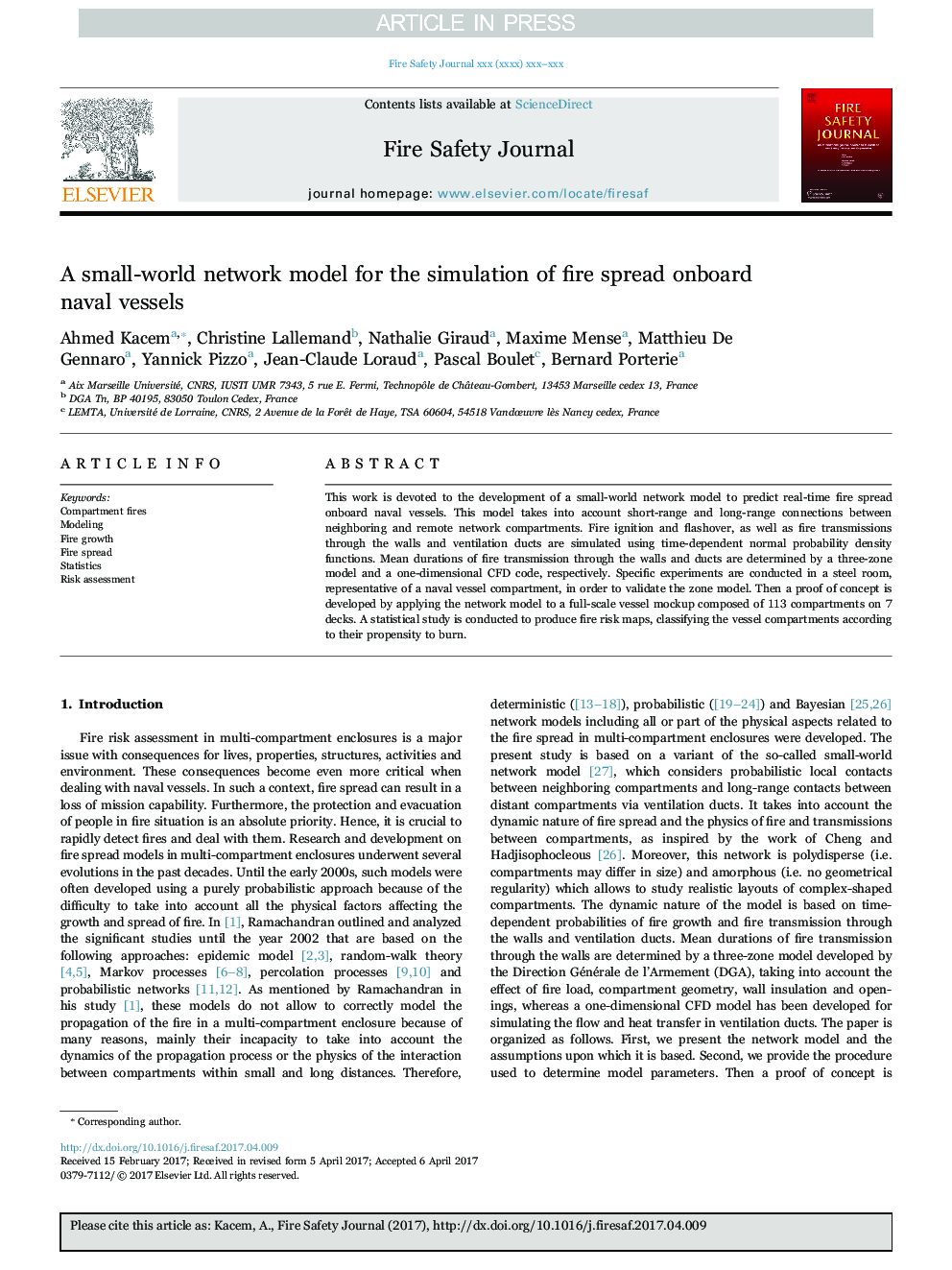| Article ID | Journal | Published Year | Pages | File Type |
|---|---|---|---|---|
| 4920926 | Fire Safety Journal | 2017 | 10 Pages |
Abstract
This work is devoted to the development of a small-world network model to predict real-time fire spread onboard naval vessels. This model takes into account short-range and long-range connections between neighboring and remote network compartments. Fire ignition and flashover, as well as fire transmissions through the walls and ventilation ducts are simulated using time-dependent normal probability density functions. Mean durations of fire transmission through the walls and ducts are determined by a three-zone model and a one-dimensional CFD code, respectively. Specific experiments are conducted in a steel room, representative of a naval vessel compartment, in order to validate the zone model. Then a proof of concept is developed by applying the network model to a full-scale vessel mockup composed of 113 compartments on 7 decks. A statistical study is conducted to produce fire risk maps, classifying the vessel compartments according to their propensity to burn.
Related Topics
Physical Sciences and Engineering
Engineering
Civil and Structural Engineering
Authors
Ahmed Kacem, Christine Lallemand, Nathalie Giraud, Maxime Mense, Matthieu De Gennaro, Yannick Pizzo, Jean-Claude Loraud, Pascal Boulet, Bernard Porterie,
